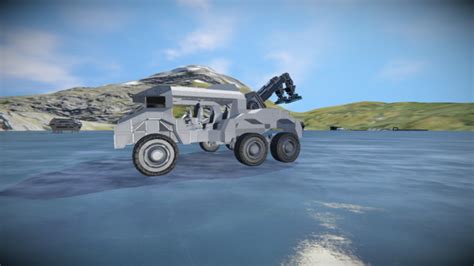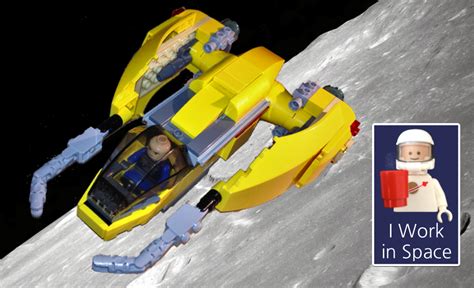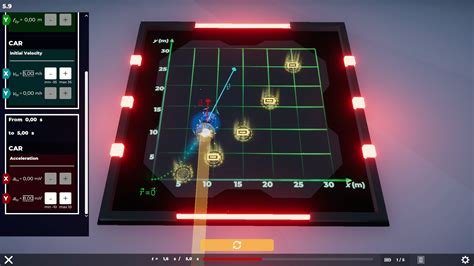The Need for a Space Tow Truck
As human activity in space continues to increase, so does the amount of debris left behind. According to the European Space Agency (ESA), there are currently over 34,000 objects larger than 10 cm in orbit around the Earth, with millions of smaller pieces also present. This debris poses a significant threat to active satellites and spacecraft, as even a small collision can cause considerable damage.
| Object Size | Estimated Number of Objects |
|---|---|
| > 10 cm | 34,000 |
| 1 – 10 cm | 900,000 |
| < 1 cm | 128 million |
Source: European Space Agency (ESA)
In addition to the debris problem, there is a growing need for on-orbit servicing and assembly. As space missions become more complex and long-term, the ability to repair, refuel, and upgrade satellites and other structures in space becomes increasingly important.
The Concept of a Space Tow Truck
The idea of a Space Tow Truck is not new, but recent advancements in technology have made it more feasible than ever before. The basic concept involves a spacecraft equipped with robotic arms, docking mechanisms, and propulsion systems that can rendezvous with other objects in space and perform various tasks.
Some of the key capabilities of a Space Tow Truck include:
-
Debris removal: Using its robotic arms, the tow truck can capture and deorbit defunct satellites and other debris, helping to clean up Earth’s orbital environment.
-
On-orbit servicing: The tow truck can dock with active satellites to perform repairs, refueling, and upgrades, extending their operational lifetimes and reducing the need for replacement.
-
Assembly assistance: For large-scale space structures, such as space stations or telescopes, the tow truck can aid in the assembly process by transporting components and assisting with the final integration.
Current Space Tow Truck Projects
Several companies and space agencies are currently developing Space Tow Truck concepts, each with its own unique approach and capabilities.
1. ELSA-d (End-of-Life Services by Astroscale)
Developed by the Japanese company Astroscale, ELSA-d is a demonstration mission designed to test key technologies for debris removal. The mission consists of two spacecraft: a “servicer” and a “client.” The servicer will attempt to capture the client using a magnetic docking mechanism, simulating the process of removing a piece of debris from orbit.
2. OSAM-1 (On-orbit Servicing, Assembly, and Manufacturing 1)
NASA’s OSAM-1, formerly known as Restore-L, is a robotic spacecraft designed to service and refuel satellites in low Earth orbit. The mission will demonstrate the ability to extend the life of existing satellites, potentially saving money and reducing the need for new launches.
3. ClearSpace-1
Led by the Swiss company ClearSpace, in collaboration with the ESA, ClearSpace-1 is a mission to remove a specific piece of debris from orbit: the upper stage of a Vega rocket launched in 2013. The mission, scheduled for launch in 2025, will use a four-armed robotic spacecraft to capture and deorbit the debris.

The Future of Space Tow Trucks
As the need for orbital debris removal and on-orbit servicing grows, the development of Space Tow Trucks is expected to accelerate. In the coming years, we can anticipate more advanced and specialized tow truck designs, each tailored to specific tasks and orbital environments.
Potential Future Applications
-
Lunar and Martian infrastructure support: As human exploration of the Moon and Mars progresses, Space Tow Trucks could play a crucial role in assembling and maintaining the necessary infrastructure, such as habitats and resource extraction facilities.
-
Asteroid mining assistance: Tow trucks could be used to transport mining equipment to asteroids and assist in the extraction and transportation of valuable resources back to Earth or other space-based processing facilities.
-
Interplanetary cargo transport: With the development of more advanced propulsion systems, Space Tow Trucks could eventually be used to transport cargo between planets, supporting the establishment of permanent human presence throughout the solar system.

FAQ
-
Q: How much debris is currently in Earth’s orbit?
A: According to the European Space Agency, there are over 34,000 objects larger than 10 cm in orbit, with millions of smaller pieces also present. -
Q: What are the main capabilities of a Space Tow Truck?
A: Space Tow Trucks are designed to perform tasks such as debris removal, on-orbit servicing (repairs, refueling, and upgrades), and assembly assistance for large-scale space structures. -
Q: Which companies and agencies are currently developing Space Tow Truck projects?
A: Astroscale (ELSA-d), NASA (OSAM-1), and ClearSpace (ClearSpace-1) are among the organizations currently working on Space Tow Truck projects. -
Q: When will Space Tow Trucks become operational?
A: Several demonstration missions are planned for the coming years, with ELSA-d and OSAM-1 already in development. ClearSpace-1 is scheduled for launch in 2025. As technology advances, more sophisticated Space Tow Trucks are expected to become operational in the future. -
Q: What are some potential future applications for Space Tow Trucks?
A: Space Tow Trucks could support lunar and Martian infrastructure, assist in asteroid mining operations, and eventually be used for interplanetary cargo transport as propulsion systems advance.
As the space industry continues to grow and evolve, the development of Space Tow Trucks will play an increasingly important role in ensuring the sustainability and safety of our orbital environment. By removing debris, servicing satellites, and assisting in the assembly of large-scale structures, these innovative spacecraft will pave the way for a new era of space exploration and utilization.


No responses yet